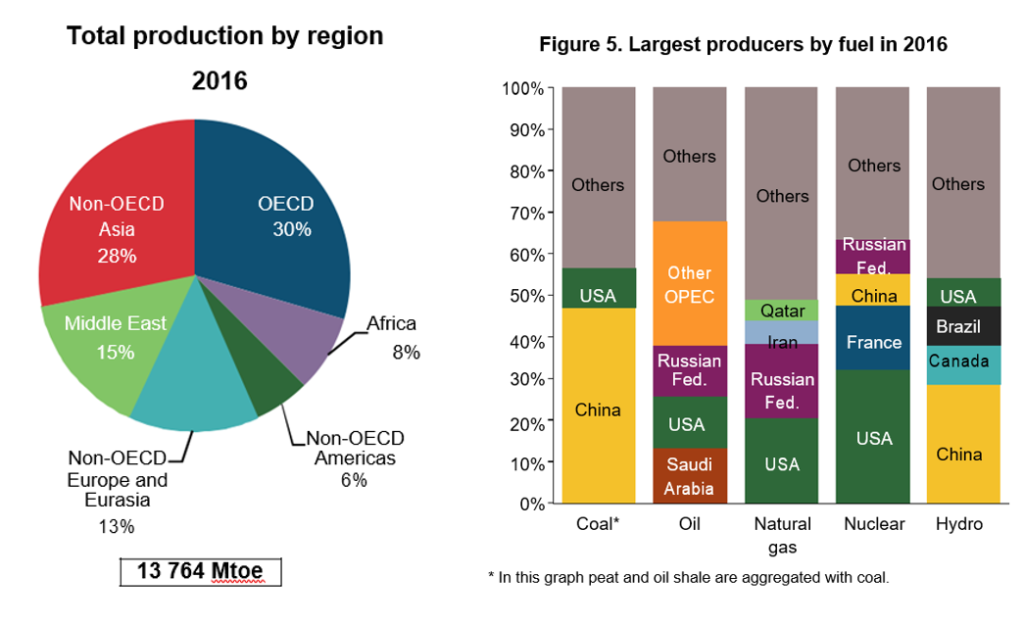
At a regional level, the OECD was the largest energy-producing area just ahead of non-OECD Asia1 in 2016 as in 2015. OECD economies produced 30% of global energy, whereas non-OECD Asia accounted for 28% (respectively 30% and 29% in 2015). Though production decreased in both regions (-2.4% in OECD, -2.7% in non-OECD Asia), they still each produced around 4 000 Mtoe, double the amount produced by the Middle East, the third biggest producing region (+8.4% in 2016 ).
The United States remained the biggest energy producer in OECD by far in 2016, with 1 915 Mtoe, even though its production fall was the largest in volume terms in the region (- 107 Mtoe). The decrease of the US production in 2016 was not offset by growth in Canada, Australia and Norway (+ 17.3 Mtoe together), respectively second, third and fourth-biggest producers in OECD. Energy production grew in 20 of the 35 member countries of the OECD. OECD countries produced 4 064 Mtoe of energy in 2016.
In non-OECD Asia, energy production significantly decreased (-2.7%), at 3 881 Mtoe in 2016, in the wake of a strong decrease in China (-6.1%), that was not compensated by increases in the two next bigger producers India (+3.6%) and Indonesia (+1.9%). In China, energy production in 2016 amounted to almost 2 400 Mtoe (-6.1%), the decline in coal production (-8.7%) and crude oil (-6.9%) being only partly compensated by growth in natural gas, hydro, nuclear and power renewables productions (+1.7%, +4.3%, +24.9%, and +18.2% respectively). In India, energy production increased by 3.6% in 2016, due to increases in coal (+2.9%) and biofuels and waste (+6.6%).
In 2016, the Middle East ranked third, with 2 043 Mtoe of energy produced. Production of energy in the Middle East grew by 8.4%, following an increase of crude oil production in the top producing economies. With 1 862 Mtoe, non-OECD Europe, and Eurasia produced 1.5% more energy in 2016 than in 2015.
Africa produced 1 107 Mtoe in 2016, non-OECD Americas 806 Mtoe, a -1.1% and -1.5% decrease respectively.
Energy production is not evenly distributed across countries: for each fuel, less than five countries generally account for more than half of global production (Figure 5). China was not far from producing half of the world coal in 2016, and 29% of hydro. The United States and France combined produced almost 50% of all nuclear. Saudi Arabia, The Russian Federation, and the United States contributed slightly less than 40% of the world crude oil – these last two also accounting for 40% of the world’s natural gas.
